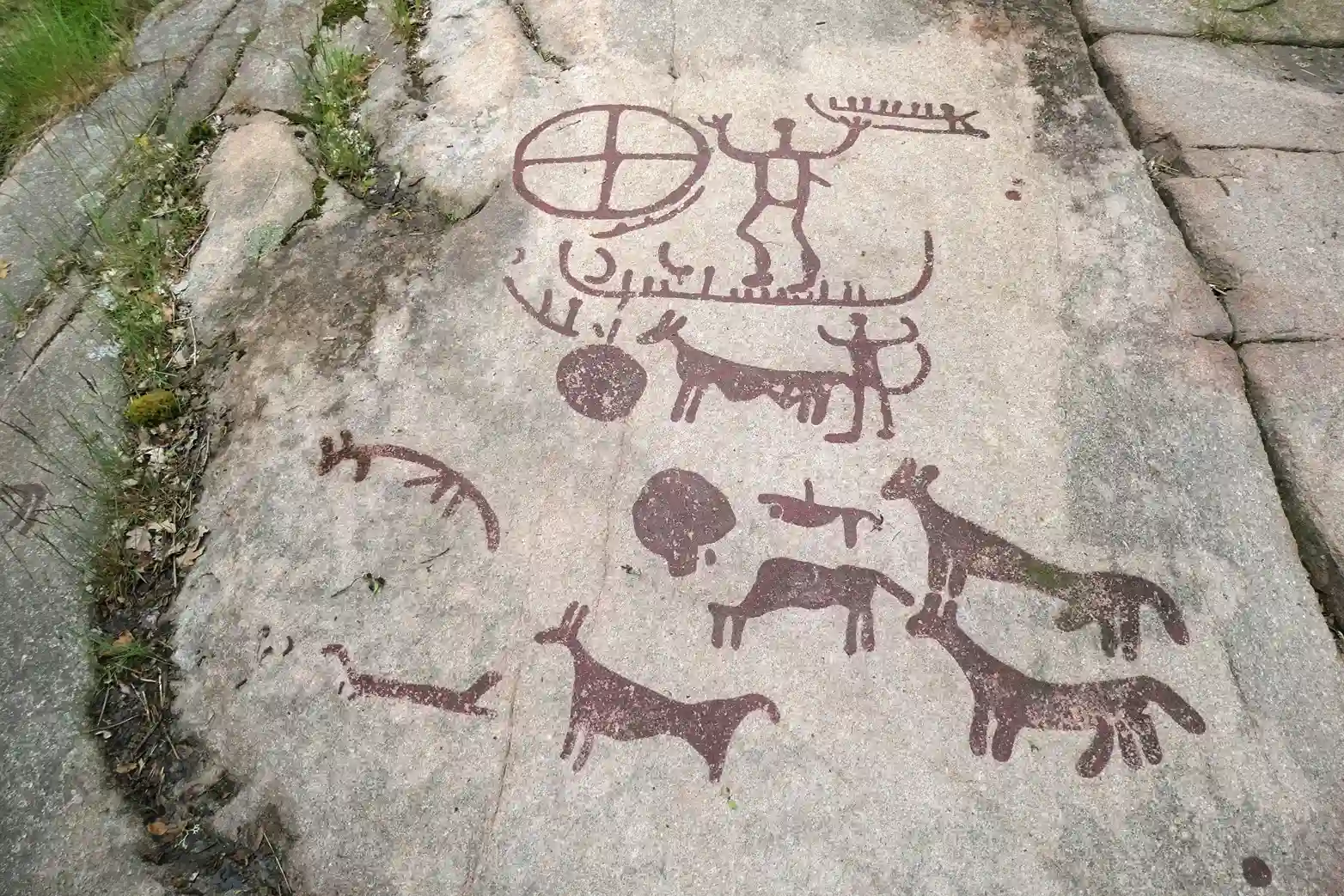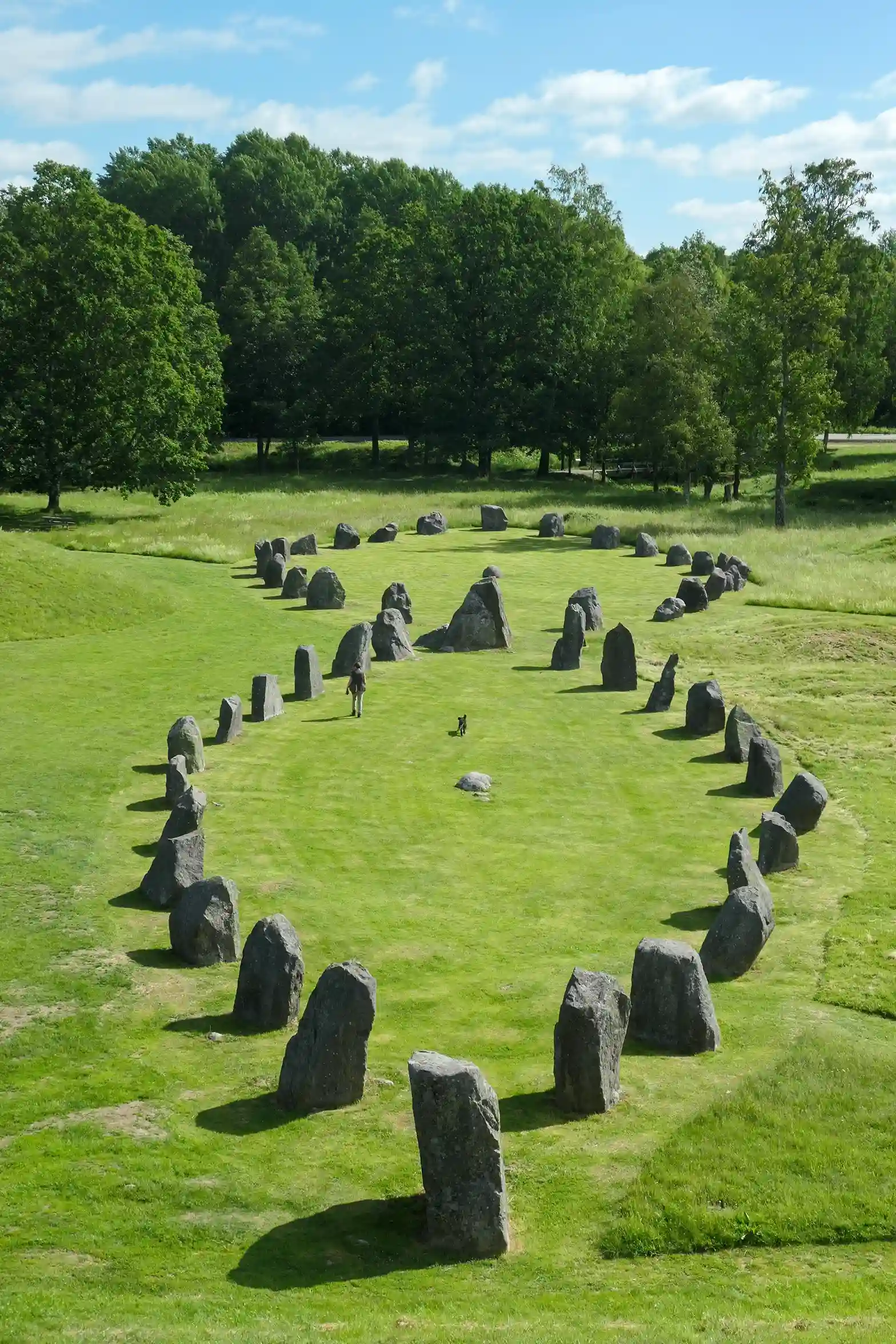Sacred Sites of Sweden
Sacred Sites of Sweden
Sweden, with its rich history and cultural heritage, is home to a variety of sacred sites that reflect its diverse spiritual landscape. From ancient stone circles and mounds to medieval churches and monasteries, these sites offer glimpses into the beliefs and practices of the people who have inhabited this land for millennia. While Christianity has been the dominant religion in Sweden for centuries, traces of pre-Christian traditions and folklore still linger in many of these sacred places.
Ales Stenar Standing Stones, Skåne
Located on a hilltop overlooking the Baltic Sea, Ales Stenar is a megalithic monument consisting of 59 large stones arranged in the shape of a ship. It is believed to be a place of astronomical significance, and its exact purpose remains a mystery.
Ålleberg Sacred Mountain, Västergötland
This prominent mountain in Västergötland is steeped in mythology and folklore. It is associated with the Norse god Thor and is believed to have been a place of worship and sacrifice in ancient times.
Alvastra Abbey
Founded in the 12th century, Alvastra Abbey is a Cistercian monastery located near the shores of Lake Vättern. It was once one of the most important religious centers in Sweden and played a significant role in the country's history.
Amundtorp Gravfält
This Bronze Age site near Falköping features numerous stone circles, cairns, and standing stones. It is a significant archaeological site and offers insights into the ceremonial practices and beliefs of the people who lived in the region over 3,000 years ago.
Anundshög, Anund's Mound, near Västerås
The largest mound in Sweden, Anundshög dates back to the 6th century and is believed to be the final resting place of a powerful Viking chieftain. It is a significant archaeological site and a testament to the region's rich history.
Askeberga
This hillfort in Östergötland is a prehistoric site believed to have served as a ceremonial and defensive center. It features stone walls, terraces, and a stone ship setting, offering insights into the lives of the people who inhabited the region during the Iron Age.
Ekornavallen burial and ceremonial site, Västergötland
This ancient site near Falköping features a large mound, stone circles, and standing stones. It is believed to have been a place of ritualistic activities during the Bronze Age.
Gamla Uppsala mounds and burial fields
Located north of Uppsala, this archaeological site includes three large mounds and several smaller ones. It is believed to have been the center of religious and political power in ancient Sweden, and its mounds are thought to contain the remains of early Swedish kings.
Greby gravfält
This Iron Age burial ground near Tanumshede features numerous rock carvings depicting ships, animals, and human figures. It is a UNESCO World Heritage site and a significant archaeological site, offering insights into the lives and beliefs of the people who lived in the region over 2,000 years ago.
Hågahögen Bronze Age mound, near Uppsala
This large burial mound near Uppsala dates back to the Bronze Age and is believed to be the final resting place of a prominent individual. It is a significant archaeological site and a testament to the region's ancient past.
Hällristingarna vid Åby Rock paintings
Located near Norrköping, these Bronze Age rock carvings depict ships, animals, and human figures. They offer insights into the beliefs and practices of the people who lived in the region over 3,000 years ago.
Havängsdösen Dolmen
This Neolithic dolmen in Skåne is one of the largest in Sweden. It is a significant archaeological site and a reminder of the region's ancient past.
Inglinge hög
A Bronze Age burial mound located in Småland, believed to contain the remains of a high-ranking individual. It is a significant archaeological site and a testament to the region's rich history.
Jättakullen Hällkista Dolmen
This Neolithic dolmen in Småland is a significant archaeological site and a reminder of the region's ancient past.
Kinnekulle Mountain, Sweden
This plateau mountain in Västergötland is known for its unique geological formations and its rich biodiversity. It is also considered a sacred site by some, with legends and folklore associated with its caves and springs.
Kungagraven
Located in Uppsala, this burial mound is believed to be the final resting place of three Swedish kings from the 6th century.
Lund Cathedral
A Romanesque cathedral in Lund, one of the oldest and most important churches in Sweden. It is known for its astronomical clock and its crypt, which houses the remains of several archbishops.
Luttra Gånggrift
This Neolithic dolmen in Falköping is one of the best-preserved in Sweden. It is a significant archaeological site and offers insights into the practices and beliefs of the people who lived in the region over 5,000 years ago.
Nämforsen rock carvings
Located on the island of Nämforsen in Ångermanland, these Bronze Age rock carvings depict ships, animals, and human figures. They are a UNESCO World Heritage site and a significant archaeological site, offering insights into the lives and beliefs of the people who lived in the region over 3,000 years ago.
Omberg Sacred Mountain near Lake Vättern
This forested mountain near Lake Vättern is steeped in mythology and folklore. It is associated with ancient rituals and beliefs and is considered a place of spiritual significance by many.
Rösaring ceremonial path
Located in Östergötland, this prehistoric ceremonial path is marked by a series of standing stones and cairns. It is believed to have been used for ritual processions and ceremonies.
Skegriedösen
This Neolithic dolmen in Skåne is one of the best-preserved in the region. It is a significant archaeological site and a reminder of the region's ancient past.
Stenshuvud National Park, sacred mountain, Skåne province
This coastal national park in Skåne is home to Stenshuvud, a prominent hill considered sacred by some. It offers stunning views of the Baltic Sea and is a popular destination for hikers and nature lovers.
Stockholm Cathedral (Storkyrkan)
The oldest church in Stockholm, Storkyrkan is a brick Gothic cathedral and the seat of the Bishop of Stockholm.
Styrdalen Valla Dolmen
This Neolithic dolmen in Bohuslän is a significant archaeological site and a reminder of the region's ancient past.
Tanum Rock Carvings, Bohuslän
This UNESCO World Heritage site in Bohuslän features thousands of Bronze Age rock carvings depicting ships, animals, and human figures.
Trollasten Dos Dolmen
This Neolithic dolmen in Bohuslän is a significant archaeological site and a reminder of the region's ancient past.
Uppsala Cathedral
The largest cathedral in Scandinavia, Uppsala Cathedral is the seat of the Archbishop of Uppsala. It is the burial place of several Swedish monarchs and other notable figures.
Vadstena Abbey
Founded in the 14th century by Saint Bridget of Sweden, Vadstena Abbey is a former Bridgettine monastery and a significant historical and cultural landmark. It is known for its Gothic architecture and its association with Saint Bridget, a prominent figure in Swedish religious history.
Västra Strömonumentet
This Bronze Age stone ship setting in Skåne is one of the largest in Sweden. It is a significant archaeological site and a reminder of the region's ancient seafaring traditions.
Vetteryds gravfält
This Iron Age site in Småland features numerous stone circles, cairns, and standing stones. It is a significant archaeological site and offers insights into the practices and beliefs of the people who lived in the region over 2,000 years ago.
Vrångstads Long Dolmen
This Neolithic long dolmen in Östergötland is one of the largest in Sweden.

Martin Gray is a cultural anthropologist, writer and photographer specializing in the study of pilgrimage traditions and sacred sites around the world. During a 40 year period he has visited more than 2000 pilgrimage places in 160 countries. The World Pilgrimage Guide at sacredsites.com is the most comprehensive source of information on this subject.


